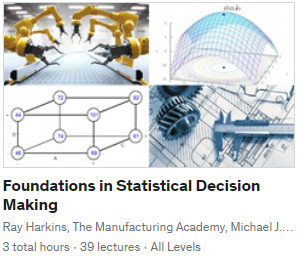No discussion of root cause analysis is complete without a review of 5 Why Analysis. This brainstorming technique was developed by Japanese industrialist and founder of the Toyota Motor Corporation, Sakichi Toyoda, and used throughout Toyota since the 1930’s. As the wave of continuous improvement moved through the aviation industry in the 1970’s, the auto industry in the 1980’s, and the healthcare industry in the 1990’s, 5 Why Analysis moved along with it. The tool’s simplicity is what makes it so adaptable in the safety, quality, engineering and production disciplines.
The means of this tool is uncomplicated: Ask recurring “Why” questions until you get past the symptoms of a problem and onto its root cause.
Why is the tire flat?
Because it has a nail in it.
Why does the tire have a nail in it?
Because the driver ran over a pile of nails on the garage floor.
Why was there a pile of nails on the garage floor?
Because a cardboard box of nails got wet and broke open.
Why did the box of nails get wet?
Because there’s a hole in the garage roof.
In this scenario, the nail in the tire was actually a symptom of the problem. The true root cause of the flat tire was the hole in the roof. Fix the roof, and the entire root cause pathway disappears.
As widely as 5 Why Analysis has been used, it has also been widely criticized. Most of this criticism has been directed not at its ineffectiveness when used properly, but at its misuse and misapplication. The most significant limitation of the tool is its linear approach. While a linear approach works for many simple problems, more complex problems almost always have interacting and dependent causes. In other words, a single root cause rarely causes a complicated problem.
A cursory study of major disasters like airline crashes and structural collapses reveals that these failures often have five or more root causes that all occurred simultaneously. Had any one of the five causes not occurred, the disaster would have been prevented. 5 Why’s linear approach is not sophisticated enough to diagnose these complex events.
A second significant shortcoming of 5 Why Analysis is its reliance on qualitative statements. In your 5 Why Analysis, the answer to your first Why question may be wrong or irrelevant, rendering the rest of the chain of questions useless. Assumptions, opinions and unconscious biases disguising themselves as facts taint the effectiveness of this tool. And too often 5 Why Analyses are dependent on the rough estimations of the tool’s user instead of quantitative observations.
In the context of manufacturing, the effectiveness of 5 Why Analysis can be improved by applying it to three different “layers” of the problem: occurrence, escapement and systemic.
At the occurrence layer, you start by asking, “Why did this defect occur?” At the escapement layer, you start by asking, “Why did this defect escape our notice?” And at the systemic layer, you start by asking, “Why did our system allowed this defect to occur?”
The occurrence layer targets the processes that made the defect including the equipment, tools, training and maintenance. The escapement layer targets the inspection plans, auditing, measurement, calibration and similar aspects. And the systemic layer targets management decisions and influences such as policies, floor layouts, equipment selection and communication.
No tool can adequately cover every situation. But when 5 Why Analysis is applied as a brainstorming tool from which further investigation can proceed, its effectiveness is almost universal across disciplines and industries.
A deeper dive into 5 Why Analysis, plus dozens of tips and tools like this are available in the online classes “Root Cause Analysis and the 8D Corrective Action Process” and “Process Capability Analysis”.



